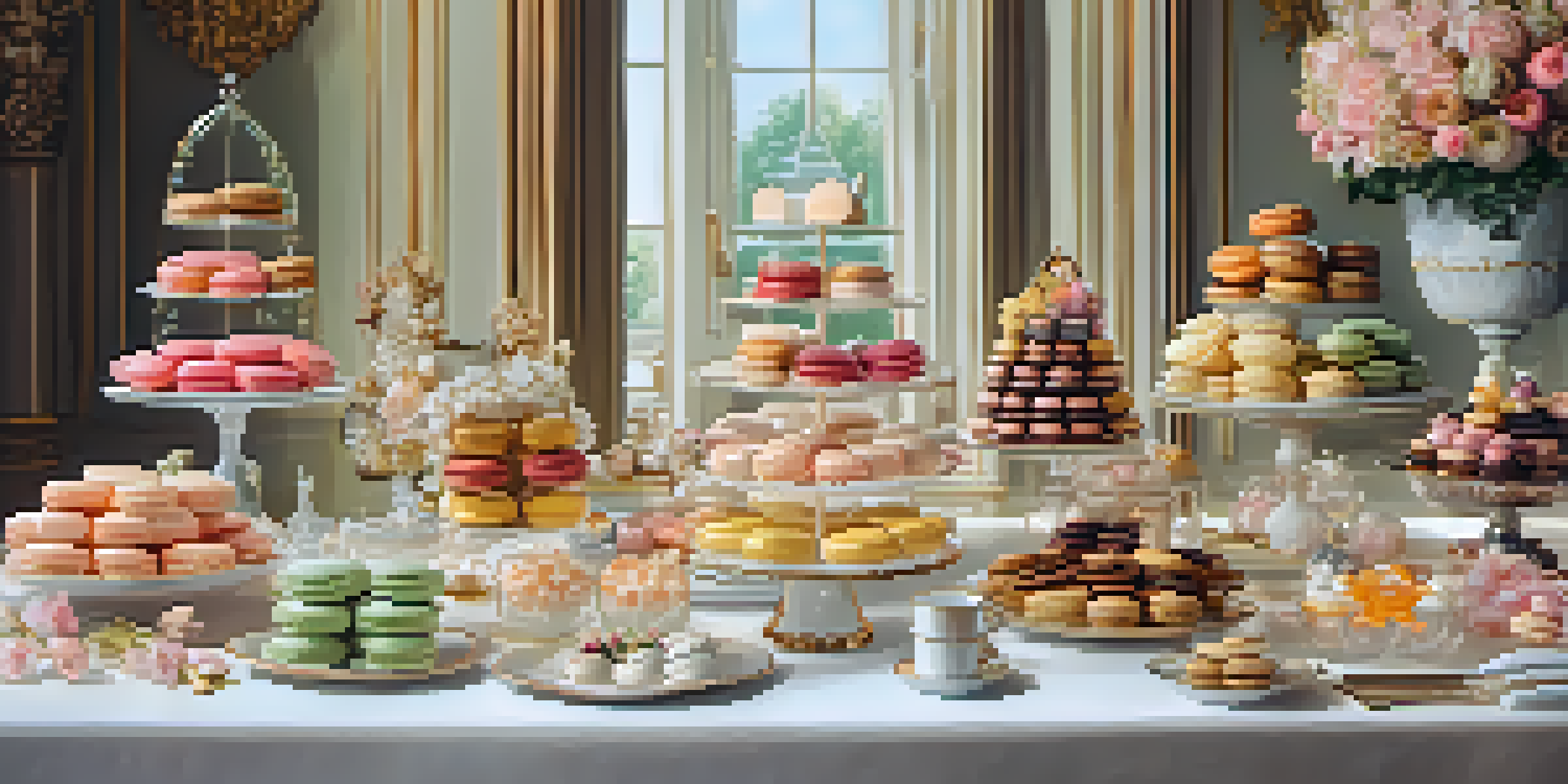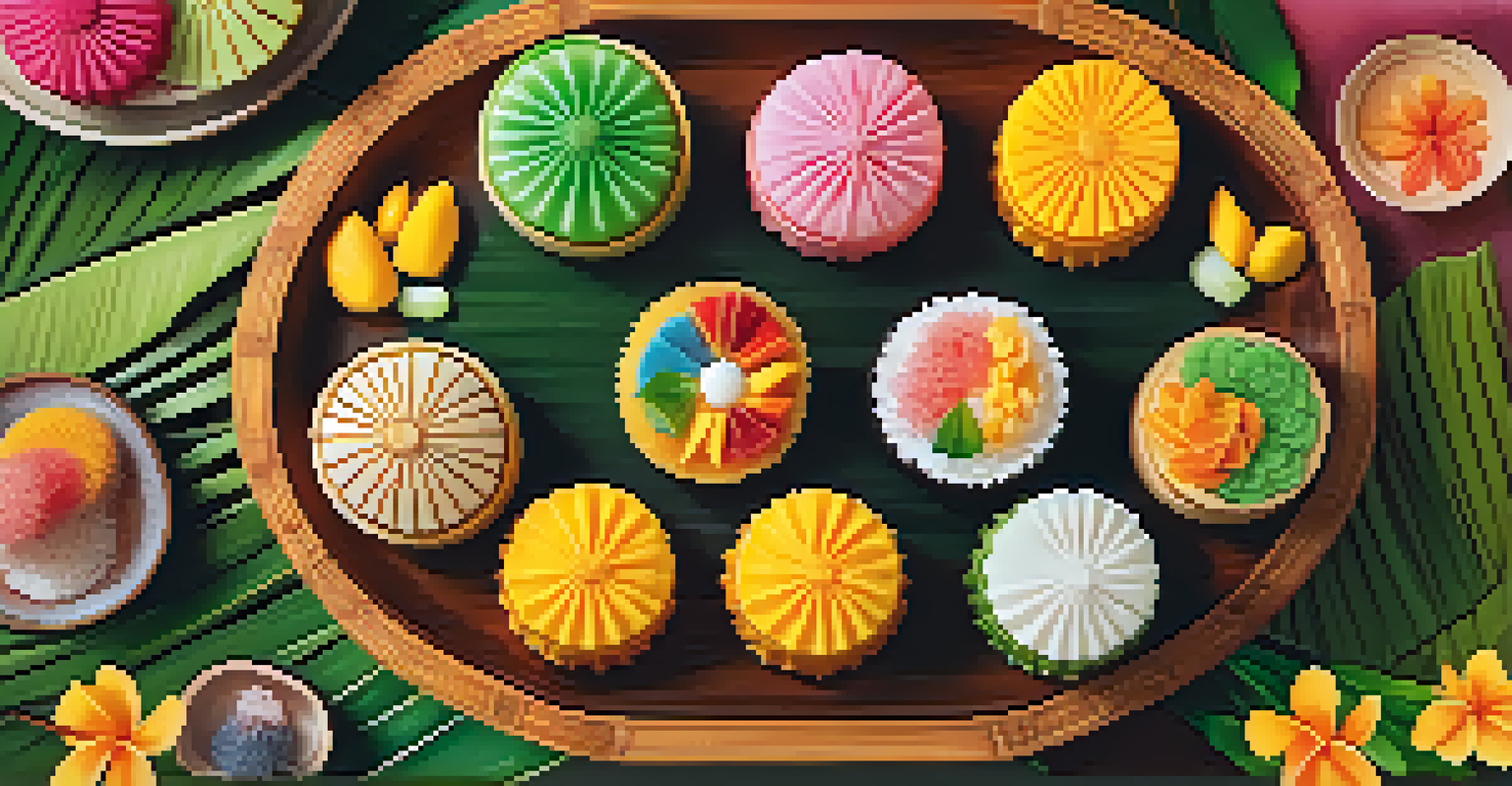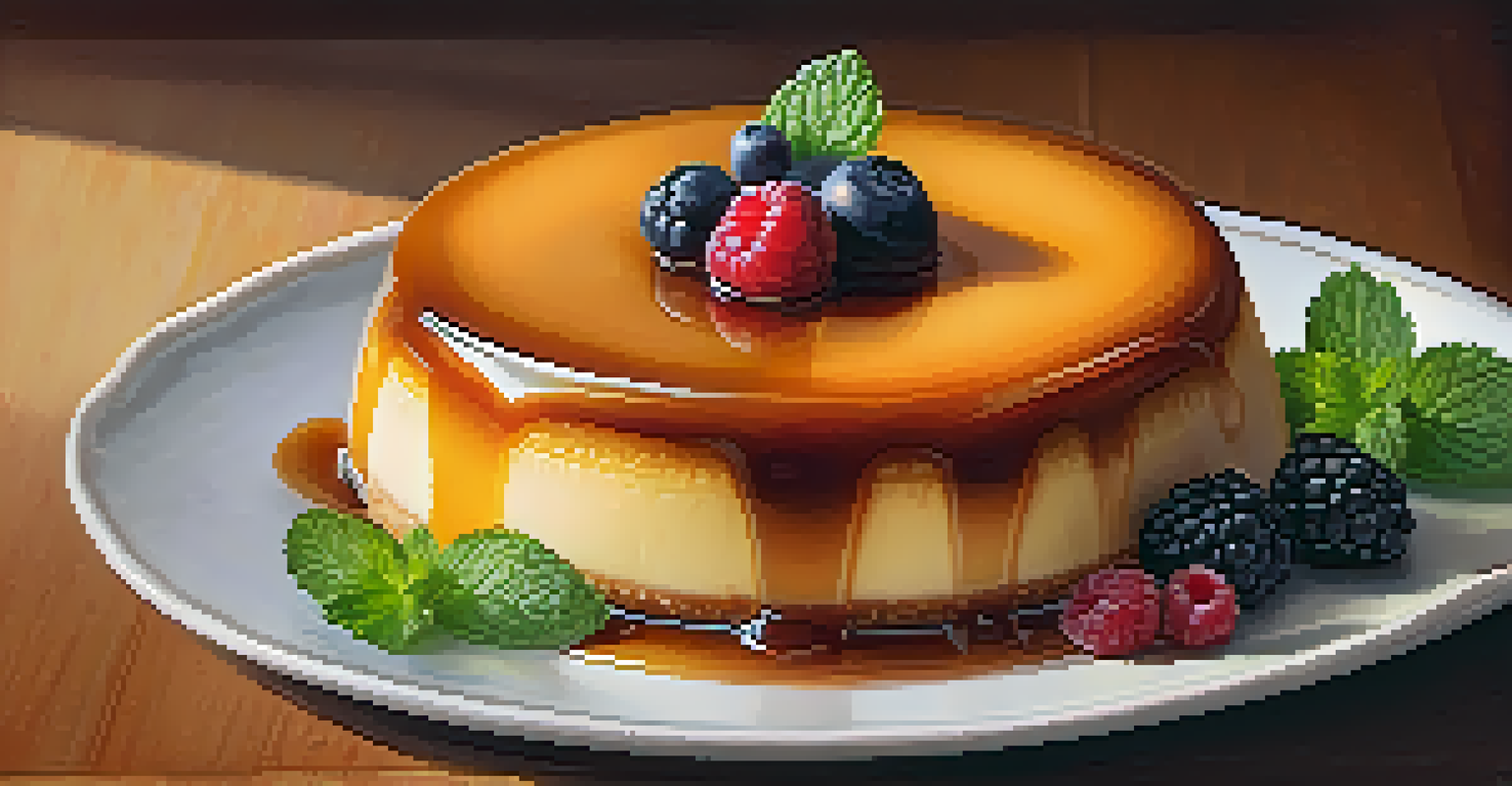Dessert Trails: Exploring Sweet Treats from Various Cultures

The Sweet Origins: A Journey Through Time
Desserts have been an integral part of human culture for centuries, evolving from simple sweeteners to elaborate creations. Ancient civilizations used honey and fruits to create treats that celebrated festivals and special occasions. As trade routes opened, ingredients like sugar and spices made their way around the globe, enhancing dessert recipes and traditions.
Desserts are the fairy tales of the kitchen—a happily-ever-after to supper.
For example, the introduction of chocolate from the Americas transformed European desserts, leading to the birth of iconic confections like cakes and pastries. Similarly, the influence of the Middle East brought us baklava, a rich pastry that blends nuts and honey. Each region's history plays a crucial role in shaping its unique dessert offerings.
Today, desserts are not just about indulgence; they're a reflection of cultural identity. From the Italian tiramisu to the Indian gulab jamun, each sweet treat tells a story, connecting us to our roots and traditions.
Exploring European Delicacies: A Taste of Tradition
Europe is a treasure trove of decadent desserts, each country boasting its own specialties. In France, the elegance of macarons and the richness of crème brûlée capture the essence of French patisserie. Meanwhile, Italy tempts with its creamy tiramisu and refreshing gelato, showcasing the art of simplicity and flavor.

The United Kingdom also has its share of beloved treats, from the classic sticky toffee pudding to the festive Christmas pudding. Each of these desserts is steeped in history, with recipes often passed down through generations, making them a staple at family gatherings. They evoke nostalgia and a strong sense of belonging.
Desserts Reflect Cultural Heritage
Each dessert tells a story that connects us to our cultural roots and traditions.
As we travel through Europe, we can savor these desserts not just for their taste, but for their cultural significance. They remind us that food is a universal language, sharing stories and traditions that transcend borders.
A Sweet Escape: Asian Desserts and Their Flavors
Asia offers a vibrant array of desserts, each reflecting its diverse cultures and flavors. From the chewy mochi of Japan to the fragrant mango sticky rice of Thailand, these treats often highlight fresh ingredients and unique textures. The use of coconut milk, rice flour, and tropical fruits makes Asian desserts a delightful experience for the palate.
Food is our common ground, a universal experience.
One standout dessert is the Indian rasgulla, a spongy cheese ball soaked in syrup that is both sweet and satisfying. Similarly, the Chinese mooncake, traditionally enjoyed during the Mid-Autumn Festival, showcases intricate designs and a variety of fillings, making it a cherished seasonal treat. These desserts are often tied to cultural celebrations, adding to their significance.
Exploring Asian desserts offers a glimpse into the region's rich culinary heritage. Each bite transports us to bustling markets and festive gatherings, where sweet treats bring people together in celebration and joy.
The Sweet Side of Latin America: Treats to Savor
Latin America is a land of rich flavors and vibrant cultures, and its desserts are no exception. From the creamy dulce de leche of Argentina to the rich chocolate mole from Mexico, sweet treats here are often made with local ingredients that tell a story. The celebration of life and family is reflected in these desserts, making them a staple at gatherings.
A popular dessert is flan, a creamy custard topped with caramel that is enjoyed in various forms across the region. Another favorite is churros, crispy fried dough often served with a side of chocolate for dipping. These desserts not only satisfy sweet cravings but also evoke feelings of warmth and community.
Diverse Global Dessert Varieties
From European pastries to Asian sweets, the world offers a rich tapestry of dessert flavors and styles.
Latin American desserts invite us to indulge in their richness while appreciating the cultural narratives behind them. They remind us that dessert is not just about sweetness; it’s about sharing moments and creating memories with loved ones.
Middle Eastern Sweets: A Fusion of Flavors
Middle Eastern desserts are a delightful fusion of flavors, often featuring ingredients like nuts, honey, and spices. Baklava, a beloved pastry made of layers of phyllo dough and nuts, exemplifies the region's love for sweet indulgence. Each bite is a perfect balance of crispy, sticky, and buttery goodness that leaves a lasting impression.
Another popular treat is halva, a dense confection made from tahini or semolina, often flavored with pistachios or chocolate. These desserts are typically enjoyed during festive occasions, bringing families together in celebration. The emphasis on sharing and hospitality is a hallmark of Middle Eastern culture, making desserts a central part of social gatherings.
Exploring Middle Eastern sweets allows us to appreciate the intricate flavors and textures that define the region's culinary landscape. They serve as a delicious reminder of the importance of tradition and togetherness in our lives.
North American Desserts: A Sweet Melting Pot
North America boasts a diverse dessert scene, influenced by its rich tapestry of cultures. From the classic American apple pie to the vibrant tres leches cake, the continent showcases a fusion of flavors and styles. Each dessert reflects the histories and traditions of the communities that created them, making them uniquely special.
For instance, the campfire favorite s’mores encapsulates the essence of summer gatherings, evoking memories of laughter around the fire. Meanwhile, the region's love for ice cream has given rise to countless flavors and combinations, appealing to sweet tooths of all ages. These desserts are often associated with nostalgia, bringing comfort and joy.
Future Trends in Dessert Creation
The dessert landscape is evolving with health-conscious and plant-based options, embracing sustainability and inclusivity.
In North America, desserts are more than treats; they are a celebration of cultural diversity. They invite us to explore the stories and traditions that shape our sweet experiences, reminding us of the joy of sharing food.
The Art of Dessert Presentation: A Feast for the Eyes
Desserts are not just meant to be savored; they are a feast for the eyes as well. The art of dessert presentation plays a crucial role in elevating the dining experience. From intricate cake designs to colorful plating, the visual appeal of desserts can make them even more enticing.
For example, a beautifully decorated cake can turn any celebration into a memorable event, while a simple scoop of ice cream can become a masterpiece with the right toppings. Restaurants and bakeries often go to great lengths to create visually stunning desserts that capture the essence of their culinary artistry.

Ultimately, the way desserts are presented can enhance the overall enjoyment. It adds an element of anticipation and excitement, making each sweet treat not just a taste experience but a sensory delight.
Sweet Trends: The Future of Desserts
As we look to the future, dessert trends continue to evolve, reflecting changing tastes and lifestyles. Health-conscious choices are becoming increasingly popular, with desserts made from alternative sweeteners and natural ingredients. This shift allows for indulgence without compromising health, appealing to a wider audience.
Plant-based desserts are also on the rise, offering delicious options for those following vegan diets. Creative recipes using ingredients like avocados or chickpeas showcase the versatility of desserts, proving that they can be both indulgent and nutritious. This innovation opens up a world of possibilities for dessert lovers.
The future of desserts promises to be exciting, with a focus on sustainability and inclusivity. As we embrace these trends, we can look forward to a diverse range of sweet treats that reflect our ever-changing world, inviting everyone to indulge in the joy of dessert.